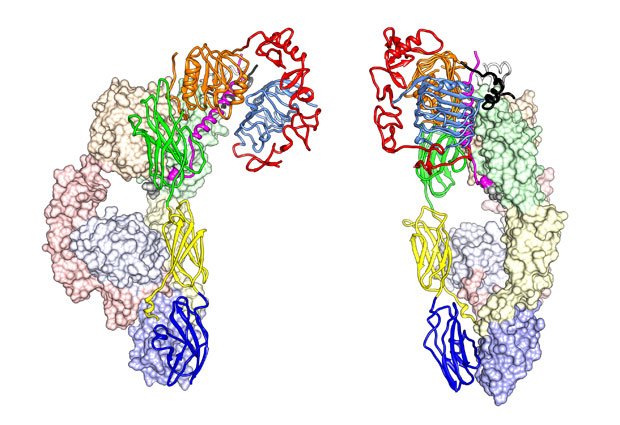More effective insulin thanks to first 3D image
An international collaboration has revealed how to make therapeutic insulins more effective than they currently are. The findings - published in Nature Communications on 24 October - will help to improve treatments for diabetes, a disease that impacts the lives of millions of people worldwide.

The study reveals the first definitive 3D image of how insulin successfully binds to its receptor, a ‘gatekeeper’ for transmitting information into cells. This interaction between insulin and its receptor is crucial for instructing cells to lower blood sugar levels in the body. The research was a collaboration of EMBL researchers Felix Weis and Christoph Müller with a team led by Associate Professor Mike Lawrence from the Walter and Eliza Hall Institute of Medical Research in Australia and the pharmaceutical company Sanofi-Aventis.
From 700,000 snapshots to 1 image
Felix Weis and Christoph Müller used cryo-electron microscopy to capture hundreds of thousands of high-resolution ‘snap shots’ of individual samples of insulin bound to its receptor, engineered by researchers at the Walter and Eliza Hall Institute. Over 700,000 of these 2D images were then combined into a high-resolution 3D image showing precisely what the successful binding between insulin and its receptor looks like.
Faster-acting and longer-lasting insulin therapies
It was already known that insulin undergoes a physical change that signals its successful connection with its receptor on the cell surface. But what researchers did not see before were the detailed changes that occur in the receptor itself, confirming that insulin has successfully delivered the message for the cell to take up sugar from the blood. This crucial knowledge allows for the design of insulin therapies that can mimic the body’s own insulin more closely. Going forward, pharmaceutical companies will be able to use these data as a ‘blueprint’ for designing therapies that optimise the body’s uptake of insulin, leading to faster-acting and longer-lasting insulin therapies.
Insulin binding with the extracellular part of the insulin receptor.
This news item is an edited version of the press release issued by the Walter and Eliza Hall Institute.



